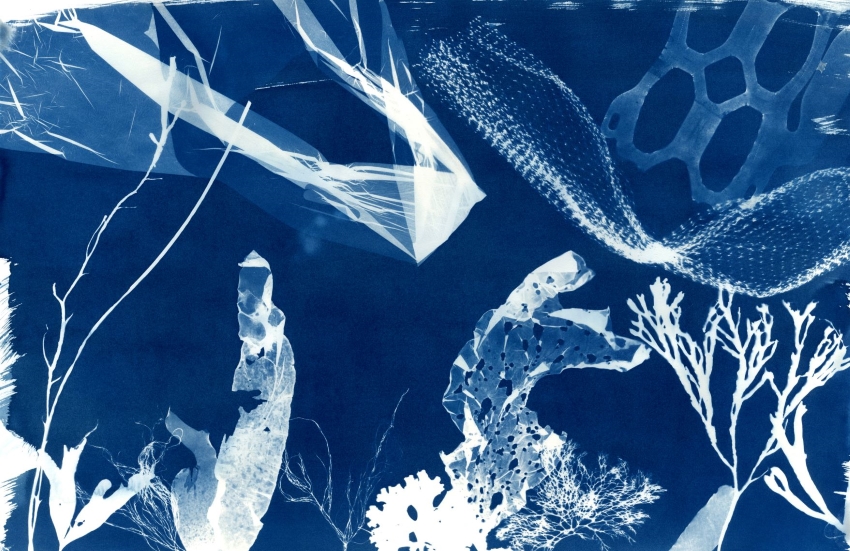What is cyanotypes?
Cyanotype is a photographic printing process that produces a cyan-blue print. Engineers used the process well into the 20th century as a simple and low-cost process to produce copies of drawings, referred to as blueprints. The process uses two chemicals: ferric ammonium citrate and potassium ferricyanide.
Cyanotypes in photography
Cyanotype photographs can be made in two ways: by using a photo negative, or by placing an object directly on the paper that is being exposed to the sun. Wherever the object blocks out the light the paper will remain white, and wherever the light hits around that object will react and turn blue.
The cyanotype process reverses light and dark, so a negative original is required to print as a positive image. Large format photographic negatives or transparent digital negatives can produce images with a full tonal range, or lithographic film can be used to create high-contrast images.
Cyanotypes in science
The cyanotype is an alternative photographic process that relies on the chemical properties of two iron compounds – ferric ammonium citrate and potassium ferricyanide. Basically, formulas of these two iron compounds are mixed together in a 1:1 ratio to form a citrine coloured solution.

Anna Atkins
Anna Atkins was an English botanist and photographer. She is often considered the first person to publish a book illustrated with photographic images. Some sources say that she was the first woman to create a photograph. Her nineteenth century cyanotypes used light exposure and a simple chemical process to create impressively detailed blueprints of botanical specimens.


Sir John Herschel, a friend of Atkins, invented the cyanotype photographic process in 1842. Within a year, Atkins applied the process to algae (specifically, seaweed) by making cyanotype photograms that were contact printed by placing the unmounted dried-algae original directly on the cyanotype paper.
Henry Peter Bosse
Henry Peter Bosse is an German-American photographer, cartographer and a civil engineer who was born on November 13 1844. Henrys cyanotypes surfaced at a Sotheby’s auction in 1990, his cyanotype photographs have been included in the permanent collections at the J. Paul Getty Museum in Los Angeles. His cyanotypes were exposed with large glass plates and printed on the finest French cyanotype paper, each sheet off-white measuring 14.5″ x 17.2″ and bearing the watermark “Johannot et Cie. Annonay, aloe’s satin.”

Materials used in cyanotypes
- Cyanotype kit (Potassium ferricyanide + Ferric ammonium citrate)
- Large disposable cup or plastic bowl.
- 1 yard of 100% cotton fabric.
- Leafs, plants, or other flat objects.
- Rubber gloves.
- Hydrogen peroxide (optional)
